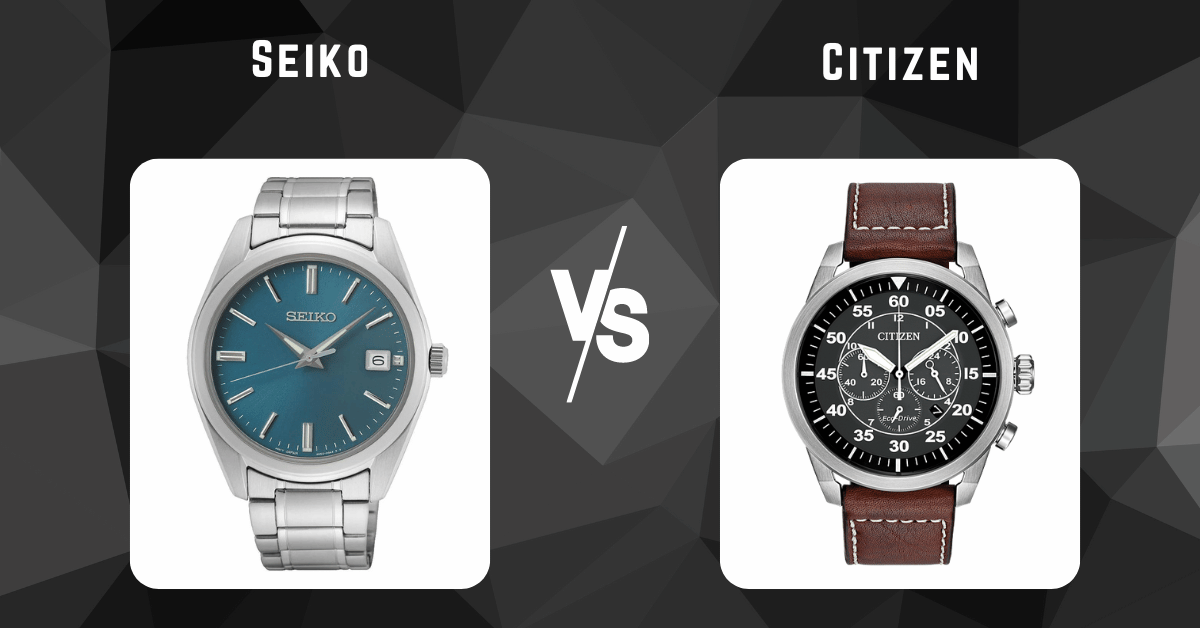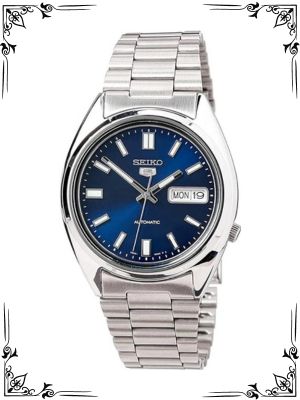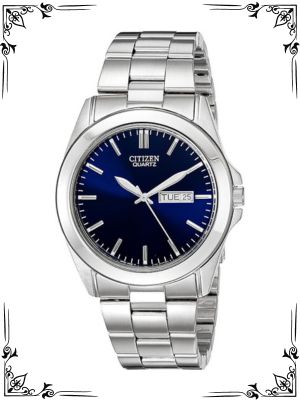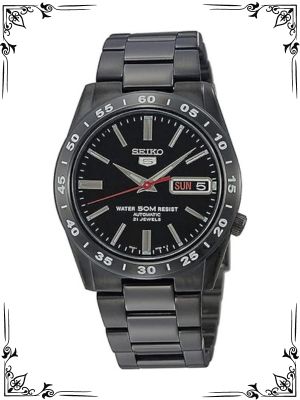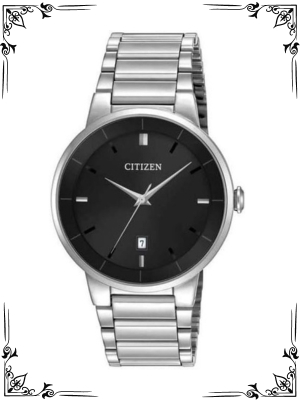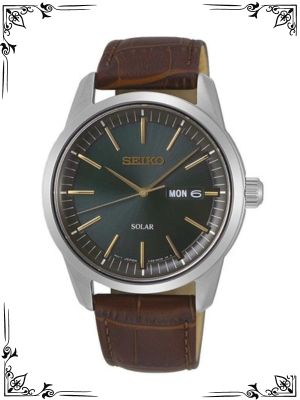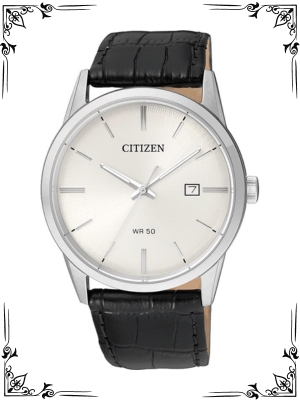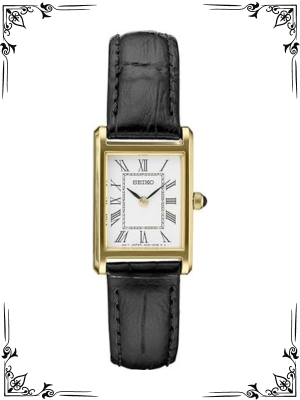Citizen and Seiko boast rich histories and distinct brand identities. Citizen, established in 1918, has become synonymous with its Eco-Drive technology, harnessing light to power quartz movements. They offer a vast collection of watches catering to diverse styles and preferences.
Seiko, founded in 1881, is a pioneer in mechanical watchmaking, renowned for its innovative movements like the Spring Drive. While Seiko offers a range of quartz movements as well, their core strength lies in their dedication to the art of mechanical timekeeping.
As you explore Citizen and Seiko, consider what resonates most with you: Citizen’s focus on sustainable Eco-Drive technology and a broader range of styles, or Seiko’s emphasis on mechanical movements and a rich heritage in watchmaking innovation.
History
Embracing Sustainability: Citizen
Citizen, established in 1918 by Shokichi Yoshida, initially focused on pocket watch repairs. Over time, they expanded into wristwatch production, becoming a major player in the global watch market. Their defining innovation arrived in 1976 with the Eco-Drive technology.
This ingenious concept utilizes light – both natural and artificial – to power quartz movements, eliminating the need for frequent battery replacements. Citizen has embraced sustainability as a core value, integrating Eco-Drive technology into a vast collection of watches.
A Legacy of Innovation: Seiko
Seiko, founded in 1881 by Kintaro Hattori, started by repairing and selling clocks. Their journey into watchmaking began in the late 19th century. Throughout the 20th century, Seiko consistently pushed boundaries. In 1964, they introduced the Grand Seiko line, showcasing their commitment to precision craftsmanship. Seiko’s most significant innovation arrived in 1969 with the revolutionary Spring Drive movement.
This unique technology combines the smooth sweeping motion of a quartz watch with the soul of a mechanical watch, offering superior accuracy. Seiko continues to innovate and offers a diverse range of timepieces, from entry-level automatics to high-end Spring Drive masterpieces.
Technical Breakdown
Now, let’s delve deeper into the technical aspects of Citizen and Seiko watches to understand their inner workings.
Movement
- Citizen: Citizen offers a variety of movement options, catering to various needs and budgets. Their core strengths lie in:
- Automatic movements: These self-winding mechanical movements provide a traditional watch experience.
- Eco-Drive quartz: Citizen’s signature technology utilizes light to power the watch, eliminating the need for battery changes.
- Standard quartz: Citizen offers some models with standard quartz movements powered by replaceable batteries.
- Radio-controlled timekeeping: Select Citizen models boast radio-controlled technology that automatically synchronizes the time with atomic clocks for ultimate precision.
Seiko: Seiko also offers a range of movement options, including:
- Automatic movements: Seiko boasts a rich heritage in mechanical watchmaking, with a vast collection of reliable and affordable automatic movements.
- Solar quartz: Similar to Citizen’s Eco-Drive, Seiko offers solar-powered quartz movements that eliminate the need for battery replacements.
- Standard quartz: Seiko provides some models with standard quartz movements powered by replaceable batteries.
- Spring Drive: This innovative Seiko technology combines a quartz crystal regulator with a mainspring, offering superior accuracy and a smooth sweeping second hand.
Here’s a table summarizing the movement variations:
| Brand | Movement Variations |
|---|---|
| Citizen | Automatic, Eco-Drive (Quartz – Solar), Standard Quartz, Radio-controlled |
| Seiko | Automatic, Solar Quartz, Standard Quartz, Spring Drive |
Materials and Construction:
Both Citizen and Seiko prioritize quality materials and construction in their watches. Here’s a general overview:
Case: Both brands primarily utilize stainless steel for their cases, offering durability and a polished look. Some models might incorporate additional materials like titanium (known for its lightweight properties) or ceramic (known for its scratch resistance).
Crystal: Both Citizen and Seiko typically equip their watches with scratch-resistant sapphire crystals for optimal clarity.
Bracelet or Strap: Both brands offer a variety of options, including stainless steel bracelets, leather straps, and even silicone straps for a more sporty look. The choice of material depends on the specific watch model and style.
Functions and Features:
While both Citizen and Seiko offer a wide range of functionalities depending on the model, here’s a breakdown of some key features:
- Timekeeping: All Citizen and Seiko watches offer basic timekeeping functions (hours, minutes, seconds).
- Date: Most Citizen and Seiko models incorporate a date display window.
- Chronograph: Some models from both brands offer chronograph functionality for stopwatch capabilities.
- Water Resistance: Water resistance varies depending on the model. Both Citizen and Seiko offer options suitable for everyday wear (splash resistance) to those designed for swimming and even diving.
- Luminescence: Many Citizen and Seiko watches feature luminous hands and/or markers for low-light visibility.
Here’s a table summarizing some key features to consider:
| Feature | Citizen | Seiko |
|---|---|---|
| Movement Technology | Focus on Eco-Drive (Sustainable) | Diverse options including Spring Drive (High Accuracy) |
| Water Resistance Range | Everyday wear to Diving | Everyday wear to Diving |
| Additional Features | Chronograph, Radio-controlled, etc. | Chronograph, GMT, Power Reserve, etc. |
Design and Aesthetics
Design is a subjective area, but here’s a glimpse into the general aesthetic approaches of Citizen and Seiko:
Dial Design:
Citizen: Citizen dials offer a diverse style spectrum. Their Eco-Drive models often showcase a power reserve indicator to display the watch’s remaining light-powered energy. Citizen dials can be more playful with color and texture compared to Seiko.
Seiko: Seiko dials tend to have a more classic or tool-watch aesthetic. Seiko’s Prospex line of dive watches, for example, prioritizes functionality and legibility. However, Seiko also offers more intricate dial designs on some models, especially in their Presage collection.
Case and Bracelet:
Citizen: Citizen offers a broader range of case styles, from classic round to sporty chronographs with bold bezels. Their bracelets cater to diverse preferences, with options ranging from sleek metal to comfortable leather.
Seiko: Seiko cases can range from classic to bold and sporty, with some models featuring iconic designs like the Tuna Can or shrouded lugs on their divers. Seiko bracelets are known for their solid construction and comfortable wear.
Brand Image:
Citizen: Citizen positions itself as a brand focused on sustainability and technological advancement with their Eco-Drive technology. Their diverse range of styles caters to a wide audience.
Seiko: Seiko cultivates an image of heritage, innovation, and a commitment to high-quality mechanical watchmaking. Their Spring Drive technology is a testament to their dedication to pushing boundaries.
Choosing between Citizen and Seiko based on a brand image depends on what resonates more with you. Do you value a brand focused on sustainability and offering a wider variety of styles (Citizen), or are you drawn to a brand steeped in history and renowned for mechanical watchmaking expertise (Seiko)?
Ultimately, the best choice in terms of design aesthetics depends on your personal preferences. Here are some additional factors to consider:
Classic vs. Modern: Citizen leans slightly more towards modern aesthetics with a wider variety of dial colors and styles. Seiko offers a good balance of classic and modern designs, with some iconic lines like their divers’ watches.
Sporty vs. Dressy: Both Citizen and Seiko offer options for both sporty and dressy occasions. Citizen might have a slight edge in terms of casual, everyday styles, while Seiko boasts a strong reputation for professional and dress watches, particularly in their Grand Seiko line (a sub-brand known for exceptional craftsmanship).
Let’s kick things off with a quick breakdown of the key points that differentiate Citizen and Seiko:
| Feature | Citizen | Seiko |
|---|---|---|
| Focus | Eco-Drive technology, diverse styles | Mechanical movements, diverse styles |
| Movement Types | Automatic, Quartz (including Eco-Drive solar), Radio-controlled timekeeping | Automatic, Quartz (including solar), Spring Drive |
| Price Range | $100 – $3,000+ | $100 – $5,000+ |
| Brand Image | Sustainability, diverse styles, value | Heritage, innovation, mechanical mastery |
User Feedback
Here’s what users generally say about Citizen and Seiko watches:
Citizen: Users love the convenience and eco-friendliness of Citizen’s Eco-Drive technology. The vast range of styles offered by Citizen caters to a wider audience. Some users might find the standard quartz movements in some Citizen models less appealing compared to Seiko’s mechanical and Spring Drive options.
Seiko: Users appreciate the heritage and quality associated with the Seiko brand. The reliability of their automatic movements and the unique sweeping second hand of the Spring Drive are often praised. Some users might find Seiko’s styling, particularly on some of their core automatic lines, to be a bit less modern compared to Citizen’s offerings.
Remember, these are general impressions. Your experience may vary depending on the specific watch model and your individual preferences.
Common Problems
Both Citizen and Seiko are known for their reliability. However, like any timepiece, they can encounter issues over time. Here are some potential concerns to be aware of:
Battery Replacement (Standard Quartz Models): For Citizen and Seiko models that use standard quartz movements, replacing the battery periodically will be necessary.
Automatic Movement Maintenance: For automatic watches from both brands, regular servicing by a qualified watchmaker is recommended to maintain optimal performance. This is especially important for Seiko’s high-beat automatic movements.
Scratches and Dings: Despite their durable construction, both Citizen and Seiko watches can get scratched or dented, especially the highly polished surfaces. Taking good care of your watch is essential.
The Final Lap: Choosing Your Champion
So, how do you decide between a Citizen and a Seiko watch? Here are some key factors to consider:
Budget: Both brands offer a range of prices. Citizen might be slightly more affordable for some Eco-Drive models. Seiko’s Spring Drive watches can be significantly more expensive than most Citizen offerings.
Movement Technology: Do you prioritize the convenience of Citizen’s Eco-Drive or the option of experiencing a high-accuracy Spring Drive from Seiko (if your budget allows)? Automatic movements from both brands offer reliable performance.
Style: Consider which brand’s design aesthetic appeals to you more. Citizen offers a wider variety of styles, while Seiko has a good balance of classic and modern designs, with some iconic sports watch lines.
Features: Think about the functionalities you need. Both brands offer core features like timekeeping and date displays, but some models might have additional features like chronographs, GMT displays for tracking multiple time zones, or power reserve indicators.
Ultimately, the best choice comes down to your personal preferences and priorities. Both Citizen and Seiko are reputable brands with a rich heritage of watchmaking excellence. By considering the factors mentioned above, you’ll be well-equipped to select the timepiece that perfectly complements your style and needs.
Conclusion
The world of watches boasts numerous excellent brands, but Citizen and Seiko consistently stand out for their commitment to quality, innovation, and catering to diverse tastes. Whether you’re drawn to Citizen’s focus on sustainable Eco-Drive technology or Seiko’s legacy of mechanical watchmaking expertise, you’re sure to find a timepiece that elevates your wrist presence.
So, embark on your watch-buying journey with confidence, knowing that both Citizen and Seiko offer exceptional value and lasting style.
FAQs
1. Is Seiko a higher-end brand than Citizen?
Seiko offers a wider range of price points, including some high-end Spring Drive models. Citizen focuses more on the mid-range market. However, both brands produce high-quality timepieces within their respective categories.
2. Which brand is more accurate, Citizen or Seiko?
Seiko’s Spring Drive boasts superior accuracy compared to most Citizen movements. However, Citizen’s Eco-Drive and standard quartz movements are still very reliable for everyday use.
3. Are Seiko watches difficult to maintain?
Seiko’s automatic movements, especially their high-beat calibers, might require more frequent servicing compared to Citizen’s Eco-Drive technology. However, with proper care, both Citizen and Seiko watches can last for many years.
4. Is it worth getting a vintage Citizen or Seiko watch?
Both Citizen and Seiko have produced iconic vintage watches that can be valuable collectibles. However, thorough research and a qualified watchmaker’s inspection are crucial before purchasing a vintage timepiece.
5. What are some alternatives to Citizen and Seiko?
If you’re exploring other options, consider brands like Tissot, Hamilton, Orient, and Longines. These brands offer a variety of styles, features, and price points to rival Citizen and Seiko.
Bonus Tip: Try the Watch on Your Wrist!
Ultimately, the best way to choose between Citizen and Seiko is to try the watches on and see which one feels most comfortable and suits your style. Both brands offer a wide range of models, so take your time, explore your options, and don’t be afraid to ask questions at watch retailers.
With a little research and some wrist time, you’re sure to find the perfect Citizen or Seiko watch that will become a cherished companion for years to come.

